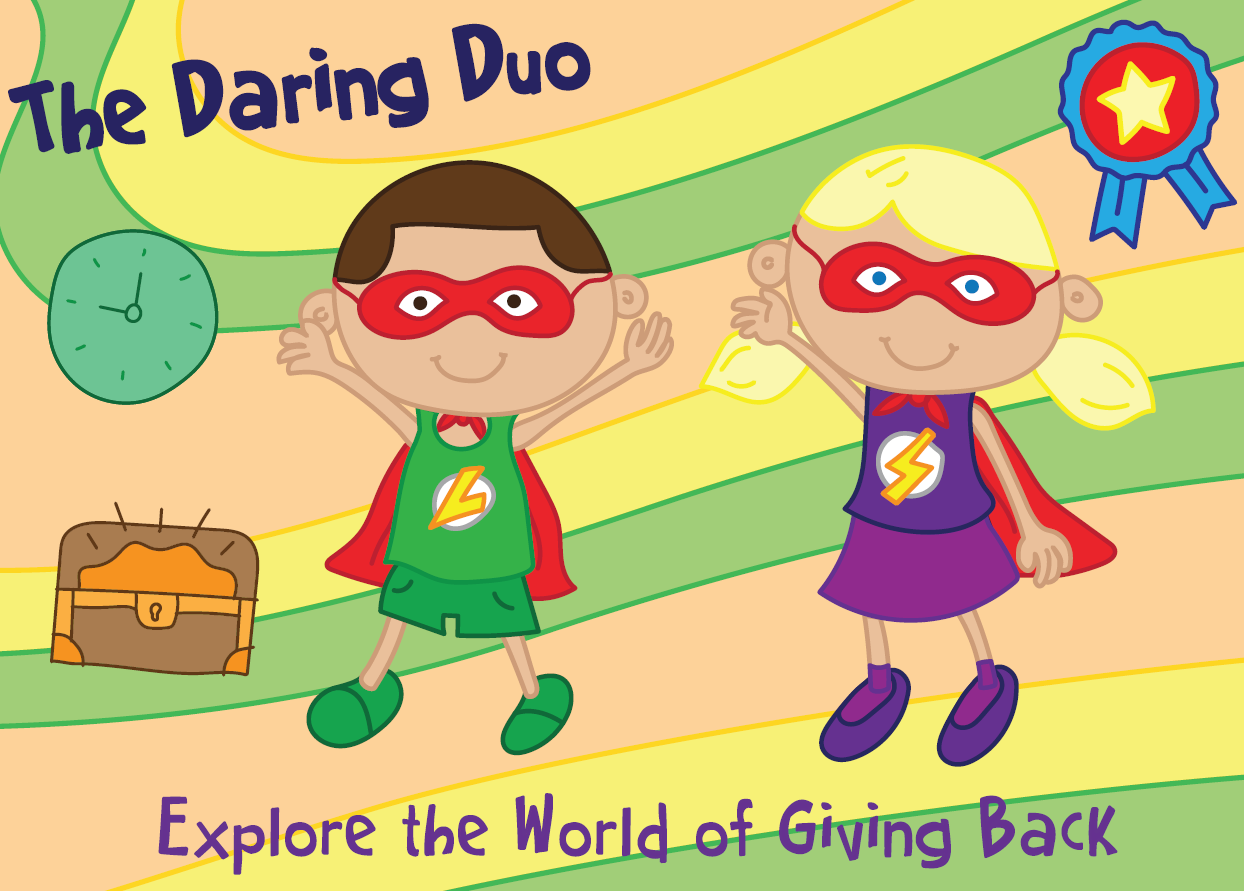From Reading to Giving: A Story from a Philanthropic Mom and Dad

Youth philanthropy has yet to be astutely defined. There will never be a clear answer on how to cultivate a life-long giver. What we do believe holds true is that if you invite children to explore the world of giving early and often, you will be inspired to see their intrinsic nature to care for others. For us, our invitation to giving for next generation family members developed through reading.
Several years ago, The Moniker Foundation developed Feed the Piggy—essentially a philanthropic savings program for our youngest family members. At age six, our littles were gifted a Moniker piggy bank along with a book we wrote about saving, growing, and giving. Each child explored the world of giving back with “superheroes” Levi and Sammy. In the book, Levi and Sammy learn what it means to give through treasures (money, in this case). The program felt like the icing on the cake and we were proud. Yet, what we did not know was our journey had just begun.
Y ear one of the program started with my seven-year-old nephew, Wyatt. We cozied up on the floor and began to read and explore the concept of treasures. After turning the last page, we could see Wyatt taking it all in—not knowing if he had grasped everything. Without much delay, Wyatt softly said he wanted to give to kids who did not have a home. Weeks later, Wyatt toured a homeless youth organization. To this day, he still attempts to identify homeless youth that might be living on the streets.
ear one of the program started with my seven-year-old nephew, Wyatt. We cozied up on the floor and began to read and explore the concept of treasures. After turning the last page, we could see Wyatt taking it all in—not knowing if he had grasped everything. Without much delay, Wyatt softly said he wanted to give to kids who did not have a home. Weeks later, Wyatt toured a homeless youth organization. To this day, he still attempts to identify homeless youth that might be living on the streets.
While the above struck us as a success, it was year two with Wyatt that really made us look inward at our process. Wyatt surprised us one night with a book of his own—etched in pencil, folded, and stapled together. His book, with little to no words, depicted a superhero flying through different parts of the city and showering people with gifts and coins. It was a masterpiece—simple, yet seemingly complex. That night, we stashed away his book knowing it would influence us in the years to come knowing it was his story that we needed to better convey to our family littles, not a story cluttered with quotation marks and complex sentences.
Over the next year we became parents. We spent every nap and every bedtime reading countless stories to our daughter, Avery. We found ourselves studying the books—learning the stories, intentions, pictures, publishers, and even each book’s fit in her book bin. The stories Avery connected to were like Wyatt’s: simple, yet complex. The structure was easy to follow with rhymes and simple, small words.
 Soon it became time again to dust off Wyatt’s story and rewrite our book. Our new book needed to harness simplicity and complexity. Did something like this already exist? The answer was no. Sure, there were books detailing activities and the concepts of treasures (time or talents), but nothing particularly simple for little kids. So, we wrote. We spent countless hours trying to pinpoint the right words. Soon our words (over a year…) completed an entire book series, The Daring Duo.
Soon it became time again to dust off Wyatt’s story and rewrite our book. Our new book needed to harness simplicity and complexity. Did something like this already exist? The answer was no. Sure, there were books detailing activities and the concepts of treasures (time or talents), but nothing particularly simple for little kids. So, we wrote. We spent countless hours trying to pinpoint the right words. Soon our words (over a year…) completed an entire book series, The Daring Duo.
The Daring Duo follows the adventures of superhero siblings Levi and Sammy as they explore the world of giving. The series is four books with three concepts: Treasures, Time, and Talents. The first is an introduction for children around age three. Treasures, Time, and Talents are inherently complex ideas, but we try to explain them at a very basic level to introduce the concepts to this age.
We ask the reader to explore a little deeper in books two, three, and four. In these books, the topics are explored through different giving examples and teachers. We tie in each concept to a concrete story that children can grasp. At the end, we provide the “Caring Corner”—a space for the reading navigator to walk through the concepts in the books with the children. And best of all, the books are a combination of vibrant colors and black and white coloring pages to allow each child an opportunity to color in their story as they read.
We aren’t trying to move mountains, but we believe reading is a simple and effective way to provide an initial introduction to giving.
